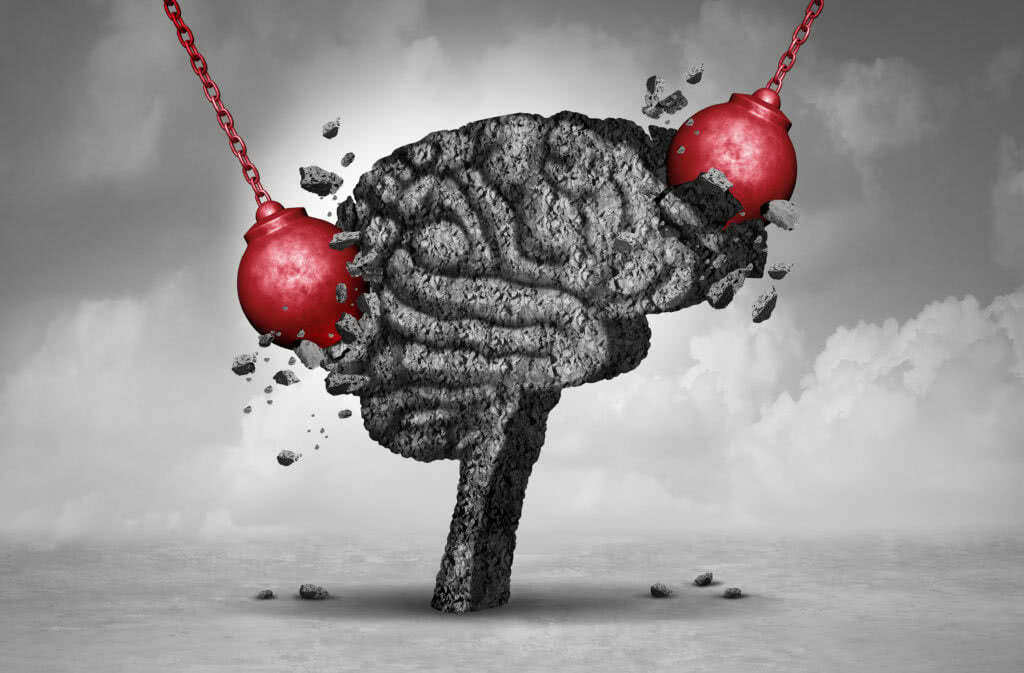How migraine and mini stroke affect stroke risk
Stroke symptoms can be deceivingly similar to symptoms of other neurological conditions. From vision problems and nausea to severe headaches and sound sensitivity, how can you know whether your symptoms are fleeting or a sign of something more serious?
In fact, it could be both. Migraines with auras and transient ischemic attacks (TIA or mini-strokes) increase your risk of stroke and mimic stroke in their symptoms. However, these conditions affect the brain and body much differently.
If you think you are having a stroke, call 911 immediately.
Knowing what to look for and what to do if you or a loved one experiences symptoms is essential.
Mini-strokes aren’t true strokes
Transient ischemic attacks (TIA or mini-strokes) occur when blood flow to the brain is blocked temporarily. Think of it like a clogged sink– there’s no water going downstream, and that’s what happens in the arteries. Riverside typically sees between 250 and 300 people each year who suffer a TIA event or have stroke warning symptoms.
While strokes typically cause permanent brain damage, TIA, in most cases, doesn’t cause long-term effects.
TIA and strokes usually have the same symptoms, use the acronym BE FAST to remember them:
- B: Balance lost
- E: Eyesight changes
- F: Face drooping
- A: Arm Weakness
- S: Speech difficulty
- T: Time to call 911
These symptoms are almost always immediate. One minute, you’re okay; the next, you’re not.
The body parts controlled by the affected area of the brain will lose function. In stroke patients, permanent damage usually occurs. With TIA patients, function generally returns after the attack is over.
If you experience any of these symptoms or notice them in a loved one, get medical help as soon as possible. A mini-stroke increases your risk of a true stroke in the future.
If you’re having a stroke, time lost is brain lost. Please get to Riverside’s emergency room as soon as symptoms appear so treatment can start and reduce damage to the brain.
Related reading: How in-ambulance care for stroke patients helps us save lives
How migraines are related to stroke
Migraines are intense headaches that can last for hours. In the United States, 18 percent of women report they suffer from migraines, and 25 percent of them suffer from migraines with auras.
Auras signal that a migraine is coming and may include:
- Visual aura: This is the most common aura and can cause tunnel vision or seeing wavy lines, star shapes, rainbow effects, or flashing lights.
- Auditory: This aura causes extreme sensitivity to sound.
- Epigastric (abdominal): Nausea and stomach pain occur with this type of aura.
- Sensory: People with this aura experience tingling, numbness, or weakness in the arms or legs.
Research has shown that women who experience migraines with auras are at higher risk for stroke. People who have migraines without auras are not at increased risk.
Migraine symptoms mimic stroke symptoms, but their effects are opposite. For example, many feel weak on one side of their body or cannot think clearly during the episode. When a migraine subsides, you’ll return to normal function. But with a stroke, you likely won’t.
Think of it this way: Strokes cause you to lose physical, emotional, or cognitive function. Migraines cause you to gain function, such as increased sensitivity to environmental factors.
There are a variety of migraine treatments available, including medications, injections, acupuncture, and nerve stimulation devices. Riverside’s team of neurology specialists can help find an appropriate treatment to control migraines and monitor a stroke risk.
How to decrease your risk of stroke
Many stroke risk factors also increase your risk of migraine or TIA. Genetics plays a role in these conditions, and though we can’t change your DNA, there are a variety of screenings and lifestyle counseling to help reduce the risks under your control.
Lifestyle changes to reduce the risk of stroke include:
- Drink less alcohol. Alcohol increases blood pressure.
- Quit smoking. Smoking contributes to plaque buildup in the arteries and increases the risk of blood clots.
- Control your cholesterol levels, blood pressure, and diabetes. Each of these chronic conditions cause plaque to build up in the arteries, which narrows the path for blood to flow to the brain.
- Maintain a healthy weight. Obesity is linked to these and many other conditions, including certain types of cancer.
If you are concerned about your risk of stroke, call Riverside Neurology Specialists at (815) 935-0750 or schedule a consultation online with one of the neurologists in our Certified Primary Stroke Center.
If you experience stroke symptoms, call 911 immediately.

